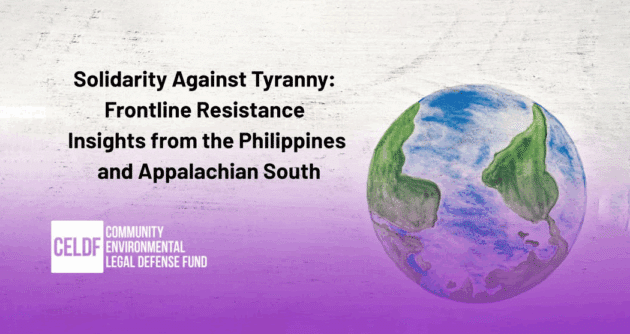Feature photo by Pax Ahimsa Gethen
We are long past the time when we can afford to settle for Pyrrhic victories
Despite growing awareness of the existential threats posed by ecological collapse, the environmental movement is losing badly. Humans are currently destroying more of the natural world, and with that ourselves, at a faster rate than ever before. Every passing second means more of the natural world is irreversibly destroyed. And, what is destroyed today cannot support life tomorrow. This means that we can no longer afford to waste time on ineffective strategies. Our tactics must change to reflect the urgency of the global situation.
The fact that the environmental movement clings to any news of environmental “victories” no matter how small, fleeting, or Pyrrhic is actually counter productive. It is especially dangerous to normalize celebrating Pyrrhic victories when time is so short and the physical building blocks of life on Earth are becoming scarcer and scarcer. The Merriam-Webster Dictionary defines a “Pyrrhic victory” as “a victory that comes at a great cost, perhaps making the ordeal to win not worth it.” The term comes from Roman history. In the third century BC, King Pyrrhus of Epirus waged a war against the Roman Republic. Pyrrhus suffered irreplaceable casualties while defeating the Romans at the Battle of Heraclea in 280 BC and the Battle of Asculum in 279 BC. When asked about his victories, Pyrrhus replied that another such victory would utterly undo him.
For the most part, industrial nations like the United States have neutralized direct, militant resistance to colonization and environmental destruction. This has and will continue to get worse under the Donald Trump administration. The Trump administration’s crackdown on student protestors, disregard for court orders, threats to judges, intimidation of law firms and lawyers, and mass deportations without due process all foreshadow even more aggressive repression in the future. It’s important to understand that as the world’s resources dwindle and competition for those resources becomes fiercer and fiercer, both major American political parties support more aggressive means to silence dissent.
When we look into American history, we see how native nations were massacred, removed at gunpoint from their homelands, and endured extreme physical punishment in boarding schools through the American government’s campaign to “kill the Indian and save the man.” And in many ways this hasn’t stopped. After being freed from slavery, African-Americans were violently terrorized by local police and organizations like the Ku Klux Klan to ensure the economic dominance of whites as a class. In the late 19th and early 20th centuries, the working class was also massacred, intimidated by corporate thugs, and confined to poverty to ensure workers never truly unified to wield the power the working class has always been capable of. The violence wielded by corporations and the state has been so effective that social and environmental justice movements rarely even consider direct tactics and never consider militant resistance. Therefore, while King Pyrrhus suffered crippling levels of human casualties in his campaigns, humans rarely give their lives in service of American environmental campaigns.
That does not mean that we do not suffer casualties. The Lancet is one of the most reputable public health and medical journals globally. In 2022, The Lancet Commission on Pollution and Health analyzed 2019 data (the most recent available) and concluded that pollution – “the unintended consequence of industrialization and urbanization” – was responsible for 9 million premature deaths in 2019. The Lancet stated that “[o]ver the past two decades, deaths caused by the modern forms of pollution (e.g., ambient air pollution and toxic chemical pollution) have increased by 66%, driven by industrialization, uncontrolled urbanisation, population growth, fossil fuel combustion, and an absence of adequate national or international chemical policy” and explained that “little real progress against pollution can be identified overall, particularly in the low-income and middle-income countries, where pollution is most severe.” These are the casualties we sacrifice when we choose ineffective tactics.
 Image via Adbusters. Used with permission.
Image via Adbusters. Used with permission.
We must recognize Pyrrhic victories and diagnose them for what they are. The election of Joe Biden in 2020, for example, was celebrated by many as a climate win. It was not. A May 2024 article in E&E News reported: “President Joe Biden entered the White House promising to end drilling on public lands. Instead, he presided over a record boom in U.S. oil production.” And, according to the U.S. Energy Information Administration, oil production escalated under Biden, growing by around 530,000 barrels a day since 2020. Today, the United States is producing more oil every year than any country in world history. If this isn’t bad enough, consider how many hours, how much money, how much energy social and environmental justice activists spent on getting Joe Biden elected when they could have spent all that time, money, and energy directly stopping the destruction of the planet and physically protecting their communities. The same could be said for the time, money, and energy spent in the attempt to elect Biden’s corporatist protege Kamala Harris, a losing effort.
The Endangered Species Act of 1973 is often lauded as the crown-jewel of American environmental regulatory law and its passage celebrated as one of the great victories of the American environmental movement. However, it took 73 years of failed federal conservation laws including the Lacey Act of 1900, the Migratory Bird Treaty Act of 1918, the Land and Water Conservation Fund Act of 1965, and the Endangered Species Preservation Act of 1966 before Congress was willing to pass the Endangered Species Act.
The Endangered Species Act is almost 52 years old now and it is largely ineffectual at actually protecting endangered species. According to a 2016 study published by the Ecological Society of America, “less than 2 percent of all species that have ever been listed (formally protected by the [Endangered Species Act] as endangered or threatened) have recovered to the point where they qualified for delisting.” The same study summarized 20 years worth of reports that the United States Fish and Wildlife Service and National Marine Fisheries Service submitted to Congress. These reports showed that 52% of listed species were declining, 35% were stable, 8% were improving, 3% were presumed extinct, and 2% were unknown.
Meanwhile, the United Nations Environment Programme estimates that 150-200 species of plant, insect, bird and mammal are driven to extinction every day. The Living Planet Index, which “is a measure of the state of the world’s biological diversity based on population trends of vertebrate species from terrestrial, freshwater and marine habitats” sponsored by the World Wildlife Fund and Zoological Society of London, monitors 5,495 species and 35,000 wildlife populations. The Living Planet Index reports a decrease of 73% in wildlife populations from 1970 to 2020. According to the Living Planet Index’s 2024 report: “This means that over 50 years, the size of monitored wildlife populations…has reduced, on average, by almost three quarters.” Despite the countless hours and money spent in the last 125 years to pressure the federal government to pass laws like the Endangered Species Act that were supposed to protect biodiversity, biodiversity in the United States and around the world is being destroyed at a rate faster than ever before.
The campaign to stop the Dakota Access Pipeline is another example worth evaluating closely. The campaign, which sparked the grassroots Standing Rock protest, was featured on mainstream nightly news for months in 2016 and 2017. While Native land and water protectors and their non-Native allies struggled valiantly against state-sponsored violence and police brutality (hundreds were arrested and two brave people were even killed), filed multiple lawsuits against the project (some of which are ongoing), and raised international awareness about the harms caused by fossil fuel infrastructure, the hard truth is that the Dakota Access Pipeline was built.
This may be difficult to hear for some, but what has been lauded as the greatest American mobilization of the environmental and indigenous sovereignty movement in decades failed to protect land and water. According to the National Resources Defense Council, the Dakota Access Pipeline currently carries 750,000 barrels of crude oil per day from North Dakota’s Bakken region to an oil terminal in Patoka, Illinois. From the Patoka oil terminal, those 750,000 daily barrels of crude oil are transmitted south to oil refineries in the Gulf Coast before being shipped to markets where the refined oil is burned worldwide. In 2022, the Illinois Commerce Commission approved expanding the Dakota Access Pipeline’s load to 1.1 million barrels of crude oil daily. And to make matters worse, the State of North Dakota sued the federal government for $38 million for failing to effectively stop land and water protectors from protesting even faster than they did, and Greenpeace was sued by the Dakota Access Pipeline’s owner, Energy Transfer Partners. While Energy Transfer Partners initially sought $300 million for Greenpeace’s role in the campaign, this past March, a Morton County, North Dakota jury found Greenpeace liable for more than $660 million in the case. In other words, not only were hundreds of people arrested, hundreds of people were convicted, two people were killed, the pipeline was built, land was destroyed, water is threatened, oil continues to flow, the climate is harmed, major environmental organizing has been all but destroyed and the perpetrators of this harm will likely make millions of dollars off of the protests.
If the campaign against the Dakota Access Pipeline was a victory, then one more such victory might utterly undo us.
We must remember, too, that the campaign against the Dakota Access Pipeline, the greatest American mobilization of the environmental and indigenous sovereignty movements in decades, only tried to stop one pipeline. The U.S. Department of Transportation’s Pipeline and Hazardous Materials Safety Administration reports that there are more than 2.6 million miles of fossil fuel pipelines in the United States. The Dakota Access Pipeline represents a minuscule 1,172 of those 2.6 million miles or less than .05% of all fossil fuel pipelines currently operating in the United States. And, fossil fuel pipelines are only one of countless forms of environmental destruction currently happening in the United States. All of that work, all of those lawsuits, all of those arrests, all of those convictions, all of that money… to stop one pipeline. What if all of those resources were spent instead on deeper structural change? On making fossil fuel pipelines everywhere illegal or inoperable?
We actually do have a choice in the tactics we employ to protect what’s left of the natural world. When we choose slow, long-developing tactics that depend exclusively on persuading people who derive their power from destroying the natural world to stop destroying the natural world, we also choose to sacrifice more of our other-than-human allies, more water, more air, more soil, more of Earth’s resilience to recover from the destruction. We are long past the time when we can afford to settle for Pyrrhic victories. We need decisive victories and we need them now.
You can read more about how CELDF is working to achieve urgent, decisive victories through its Community Resistance & Resilience Program here.



